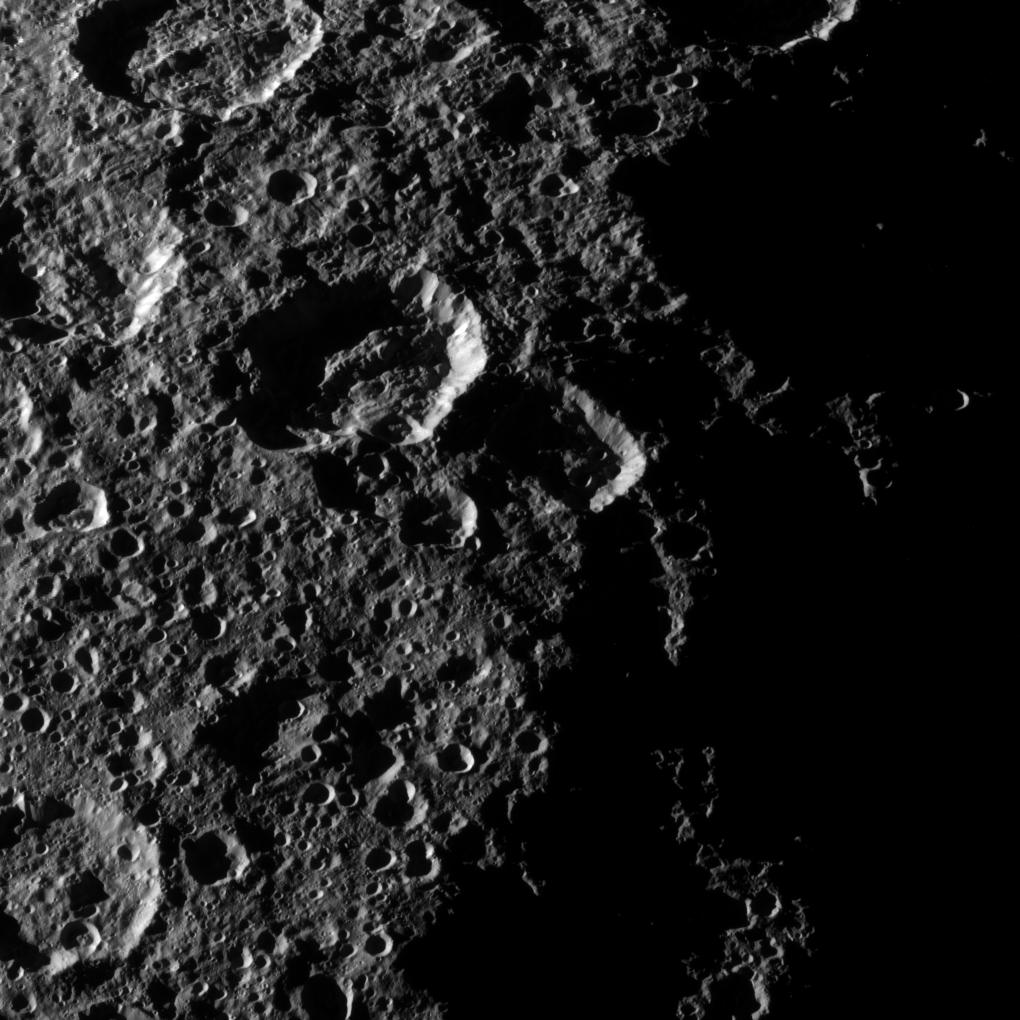Rhea’s Northern Craters

| PIA Number | PIA12746 |
|---|---|
| Language |
|
The Cassini spacecraft captured this high-resolution view of the cratered surface of Saturn's moon Rhea as the spacecraft flew by the moon on Oct. 17, 2010.
For closer views of Rhea's surface from earlier flybys, see Craters, Craters Everywhere and Rhea's Pop-up Crater. This view is centered on terrain at 60 degrees north latitude, 251 degrees west longitude on Rhea (1,528 kilometers, 949 miles across).
The image was taken in visible light with the Cassini spacecraft's narrow-angle camera. The view was acquired at a distance of approximately 40,000 kilometers (25,000 miles) from Rhea and at a Sun-Rhea-spacecraft, or phase, angle of 88 degrees. Image scale is 238 meters (781 feet) per pixel.
The Cassini-Huygens mission is a cooperative project of NASA, the European Space Agency and the Italian Space Agency. The Jet Propulsion Laboratory, a division of the California Institute of Technology in Pasadena, manages the mission for NASA's Science Mission Directorate in Washington. The Cassini orbiter and its two onboard cameras were designed, developed and assembled at JPL. The imaging team is based at the Space Science Institute, Boulder, Colo.
For more information about the Cassini-Huygens mission visit http://saturn.jpl.nasa.gov or http://saturn.jpl.nasa.gov/ . The Cassini imaging team homepage is at http://ciclops.org .
Credit: NASA/JPL/Space Science Institute
